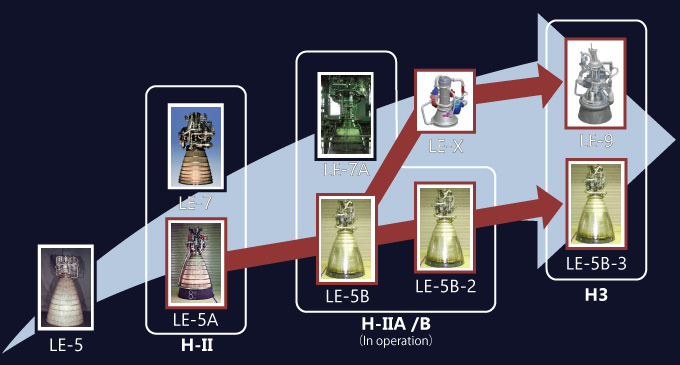
H3 Launch Vehicle
About the H3 Launch Vehicle
The H3 is Japan's next-generation heavy-lift launch vehicle. It is now being developed to be a successor to the H-IIA rocket currently in operation so that Japan can continuously have access to space. We are aiming to create an operational world where Japanese industrial base can be underpinned by steadily launching the H3 six times or so annually for 20 years. To achieve this aim, the H3 needs to receive orders to launch not only government satellites but also commercial satellites of private companies from the launch service market. To attract commercial satellite amid new launch vehicles being developed around the world, we need to create a new rocket which can draw attention as an easy-to-use launcher from the world as well as from Japan.
Aiming for an easy-to-use launch vehicle
We surveyed and forecast what kind of launch vehicle will be needed in the world. To respond to the future demand, the H3 launch vehicle realizes three elements of high flexibility, high reliability, and high cost-performance.
High flexibility
With several configurations, the H3 offers performance and price suitable for purposes of each satellite. It also responds to users' call for speedy launch by shortening time from order receipt to launch and increasing the number of annual launches. The H3 reduces by more than half the launch preparation time for vehicle assembly, satellite encapsulation, etc. compared with H-IIA.
High reliability
Inheriting H-IIA's high success rate and on-time launch rate (the rate at which launches occurred on scheduled time and date), the H3 ensures successful launch.
High cost-performance
The H3 lowers its launch price by utilizing excellent commercial-off-the-shelf products of other domestic industries such as the automobile industry rather than products exclusive to space use as well as by changing its build-to-order production approach to something close to the line production system for general industrial products. Our target price is about 5 billion yen for a light configuration with no solid rocket booster (this configuration will be mainly for low earth orbit launch).
Challenges to new technologies
In the H3 development, we need to tackle challenges to new technologies for innovating
the whole rocket system and developing a large new liquid rocket engine LE-9 by making the most of our experience accumulated through the H-IIA operation.
JAXA and its partner companies are now concentrating Japanese technology on the development of this new launch vehicle.

Lineage of Japanese liquid rocket engine leading to LE-9
The first and second stages of the H3 have expander-bleed cycle engines, which can realize both intrinsic safety of simplicity and low cost.

Examples of element tests and numerical analyses applied to the development of the LE-9 engine. We are aiming to achieve high reliability by introducing new development methods.
Synergy with the Epsilon Launch Vehicle
The H3 will be outfitted with solid rocket boosters, which will become a common component to the first-stage motor of the Epsilon. We are now considering commonalizing other components such as avionics and a reaction control system with the aim of maximizing synergy effects from the development of the two mainstay launch vehicles.
©Japan Aerospace Exploration Agency
